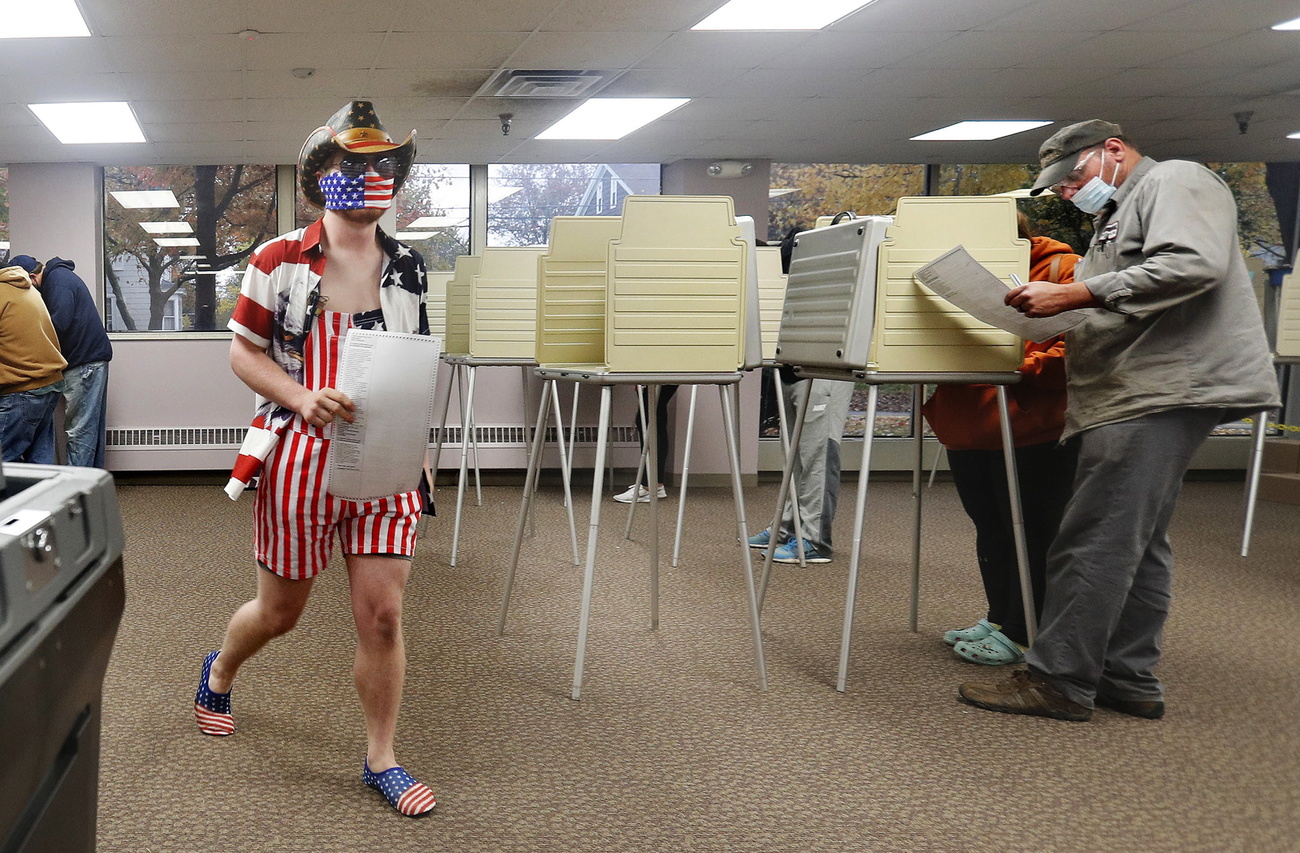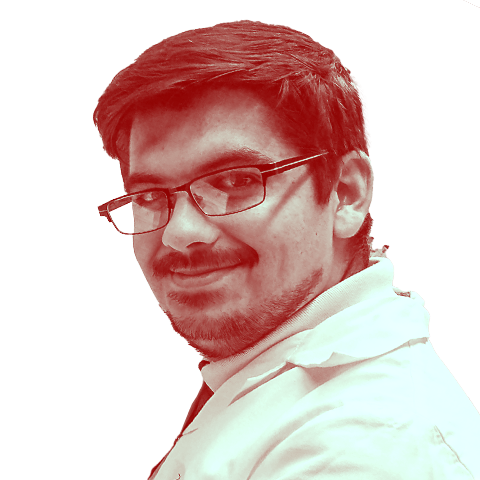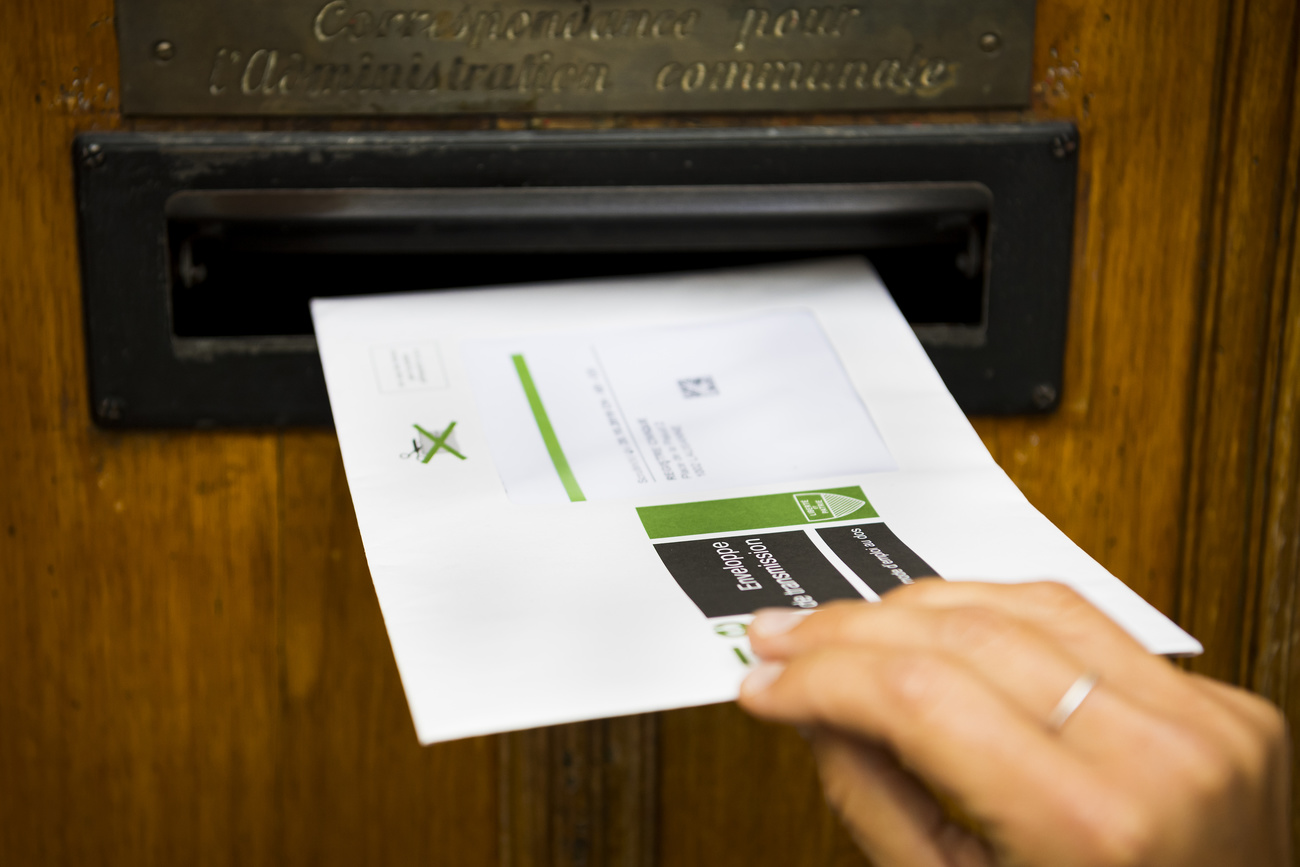Why two Swiss-led data models predict a Trump win

Two teams of researchers in Switzerland say their data models based on search frequency and speech analysis forecast a win for Republican President Donald Trump in the US elections on Tuesday. Both teams’ models predicted Trump’s 2016 victory. What’s behind their approaches?
The teams’ outlooks for the 2020 presidential race stand at odds with widespread pollingExternal link that shows the Democratic challenger, former Vice President Joe Biden, out in frontExternal link generally by significant margins.
One team used internet and social media searches to gauge interest in the candidate. The other team tweaked an established forecasting system, which is based on economic data and incumbency, by also evaluating a candidate’s charisma.
“I did feel, seriously, like an idiot being about the sole person on the planet, perhaps one or two other research teams, that also said they think Trump would win [in 2016],” says John Antonakis, professor of organisational behavior at the University of Lausanne. Antonakis, together with Philippe Jacquart, professor at Emlyon business school in France, predicted the election based on the candidate’s charisma. “I really thought that we had gotten something fundamentally wrong.”
The problem with the polls
Both groups of researchers say polling, the traditional questioning of likely voters, faces several hurdles in gaining an accurate picture of the electorate. They cite several issues, including difficulty in contacting a representative sample of voters because of the move from land lines to mobile phones; the fact that responders may not answer truthfully; and the fact that people who are polled may not vote.
“These are serious statisticians,” Antonakis says of the pollsters, “but they have a very wicked problem to solve.”

More
Is the time ripe for national referendums in the US?
Christoph Glauser, a mass media and political scientist, says he began to note the challenges in getting reliable poll data at least 15 years ago. He is the founder of the Institute for Applied Argumentation ResearchExternal link, IFAAR, a private research facility in Bern that creates computer-based systems for analysing digital media and online content.
Glauser, his research assistant Loris Schmid and Jacques Savoy, a professor of computer science at the University of Neuchâtel, led a team of scientists, economists, IT and data specialists and psychologists to develop a method of candidate evaluation based on internet searches and social media reach.
Unreliable polling “is why we started to develop API’s (application programming interfaces) for analysing what users do on the Internet in terms of searches,” he says. “These are small software packages that analyse, for example, what people really search for on Google, Twitter and Facebook.”
Searches tell the story
The researchers’ servers crawl the internet collecting untold amounts of Web search, eCommerce and social media data from 247 million active internet users in the United States. They also collect data on the candidates worldwide.
Glauser says that data for the 2020 election analysis came from 367 channels, including search engines, social media, and eCommerce sites, in the United States as well as 14,103 channels outside the country. Along with searches for both candidates, the team tracked more than 2,500 issues that people may be interested in, such as gun control, Black Lives Matter, the Supreme Court and coronavirus.

More
‘There are so many issues at stake in this election’
“The [search volume for a candidate] gives you an idea of how strong the campaign is,” Glauser says. “We are kind of living in an attention economy. If you have the attention, and you also get the active feedback of the users, you are likely to be more present in the minds of the voters.”
The searches don’t reveal whether the information is for or against a candidate, or whether it’s used for research purposes rather than pure interest. But for Glauser, the correlation with favorability is in the search volumes.
“When you have big, big data sets like we have, from all the [relevant] channels, then you can identify trends and that makes it easier to make predictions,” he says.
Trump gets the most searches
The team measured average monthly search volume across all US channels and found that Trump hovered around 70 million searches for most of the campaign. He reached more than 100 million with his tweet revealing that he’d tested positive for the coronavirus that causes Covid-19.
Biden’s peak volume reached just 26.6 million in September. Five days from the election, Glauser says both campaigns have increased their search volume, but not in ways that would change his team’s prediction of a Trump victory.
The project also evaluated Twitter engagement. This was Glauser’s research partner, Savoy’s, particular interest as his focus is on linguistics and political speech, specifically in the United States because of the country’s worldwide influence.
Typically, Savoy would analyse written and oral forms of political speech, but Twitter poses new challenges.
“It’s not the written form, it’s less formal,” Savoy says. “But it’s not the oral form. So, it’s something in between.”

More
US elections: ‘There’s less that divides us than we realise’
He found that Trump and his team were able to send 43 tweets per day compared with 11 tweets per day for Biden. Trump outpaces him significantly in followers as well, with 87 million followers compared with about 11 million for Biden.
“When Donald Trump sends a tweet, it’s clearly more visible,” Savoy says. “So that’s the second source (along with Internet searches) that is specifying, yes, it’s more frequent to see arguments in favor of Donald Trump on the social network. … Is this really going to correspond to voters? That is an open question.”
Glauser has been developing his method for about 20 years, using it to evaluate some 50 elections worldwide, he says. He began making predictions three years ago and has since called about 10 elections. His predictions, when comparing percentage of vote share a candidate receives to the percentage of search volume, tracks closely with the result, usually within 1 percent to 5 percent, he says, while polls have been much farther from the result, sometimes as high as 40 percent.
Counting charisma
The second Swiss-led research team, Antonakis and Jacquart, developed a computer programme to evaluate a candidate’s charisma – how appealing the person is to voters on a personal level.
During Antonakis’ time at Yale University, he learned of a prediction model developed by Yale economist Ray FairExternal link. The Fair model for predicting US presidential elections says that incumbents have an advantage, that voters will become fatigued with a political party after two four-year terms in office, and that an incumbent will be judged on the strength or weakness of the economy. But it was missing something, Antonakis says.
“This model ignores the differences between the two candidates,” he says. “It’s assumed that each party has put the most competent person forward.”
Research has suggested that voters will judge a candidate’s competence by their face, he says. But Antonakis couldn’t accept that the fate of governance rested on a person’s looksExternal link. So, he explored the idea of charisma and developed a charismometer: an objective means of analysing a candidate’s speech for a set of charismatic traits.

More
US vote 2020: the most global local election ever?
Charisma is important, he says, because it signals values and strengths to potential followers and it signals a possible threat to the opposing side. In Antonakis’ model, the candidate’s charisma rating is factored in with the traditional Fair model to predict a candidate’s outcomeExternal link.
Who has the edge
According to Antonakis, while Trump has an advantage as the incumbent, tough economic expectations this year because of the coronavirus pandemic are giving Biden a slight advantage in the Fair model. But Trump has more charisma, according to Antonakis’ model, and comes out as the favourite there.
The charismometer correctly called the 2012 and 2016 elections before the vote. And when the researchers applied the method to past elections, the model correctly predicted 20 out of 24 elections. Antonakis says the only thing that would affect his prediction of a Trump victory would be particularly bad US economic numbers released before the election. As of October 29, GDP figures matched expectations.

More
US elections: ‘There’s less that divides us than we realise’
Antonakis is quick to point out that charisma is subjective and relative to a speaker’s audience. For instance, former President Barack Obama would likely be considered charismatic by members of the Democratic party but not by members of the Republican party. That’s because a person is often judged charismatic if his or her values align with those of the audience.
The charismometer attempts to remove that value judgement and determine charisma according to Antonakis’ definition: “symbolic, emotional, and value-based leader signaling.”
“I want the machine to tell me, irrespective of my values, is this person charismatic or not?” Antonakis says.
How the charismometer works
The charismometer evaluates speech based on nine elements, including identifying and expressing confidence in goals, using three-part lists, speaking in metaphors and stories, and posing rhetorical questions.
To evaluate a candidate, Antonakis can copy a speech and paste it into a field on the computer screen. The programme then rates each sentence of the speech based on each of the nine elements. Then, it calculates the probability that the speaker is charismatic. For example, based on Abraham Lincoln’s Gettysburg Address given in 1863, the programme gave an 80% probability that Lincoln was charismatic. In candidate acceptance speeches for the presidential nomination between 1916 and 2016, there was on average a 30% probability that the candidate was charismatic. Trump’s acceptance speech rated him at 55.6% while Biden’s was 52%.
However, Antonakis says there’s a caveat – which will be the ultimate determining factor on November 3.
“The point is, does the person who is communicating this way galvanise the party base to come and vote?”

In compliance with the JTI standards
More: SWI swissinfo.ch certified by the Journalism Trust Initiative


You can find an overview of ongoing debates with our journalists here. Please join us!
If you want to start a conversation about a topic raised in this article or want to report factual errors, email us at english@swissinfo.ch.